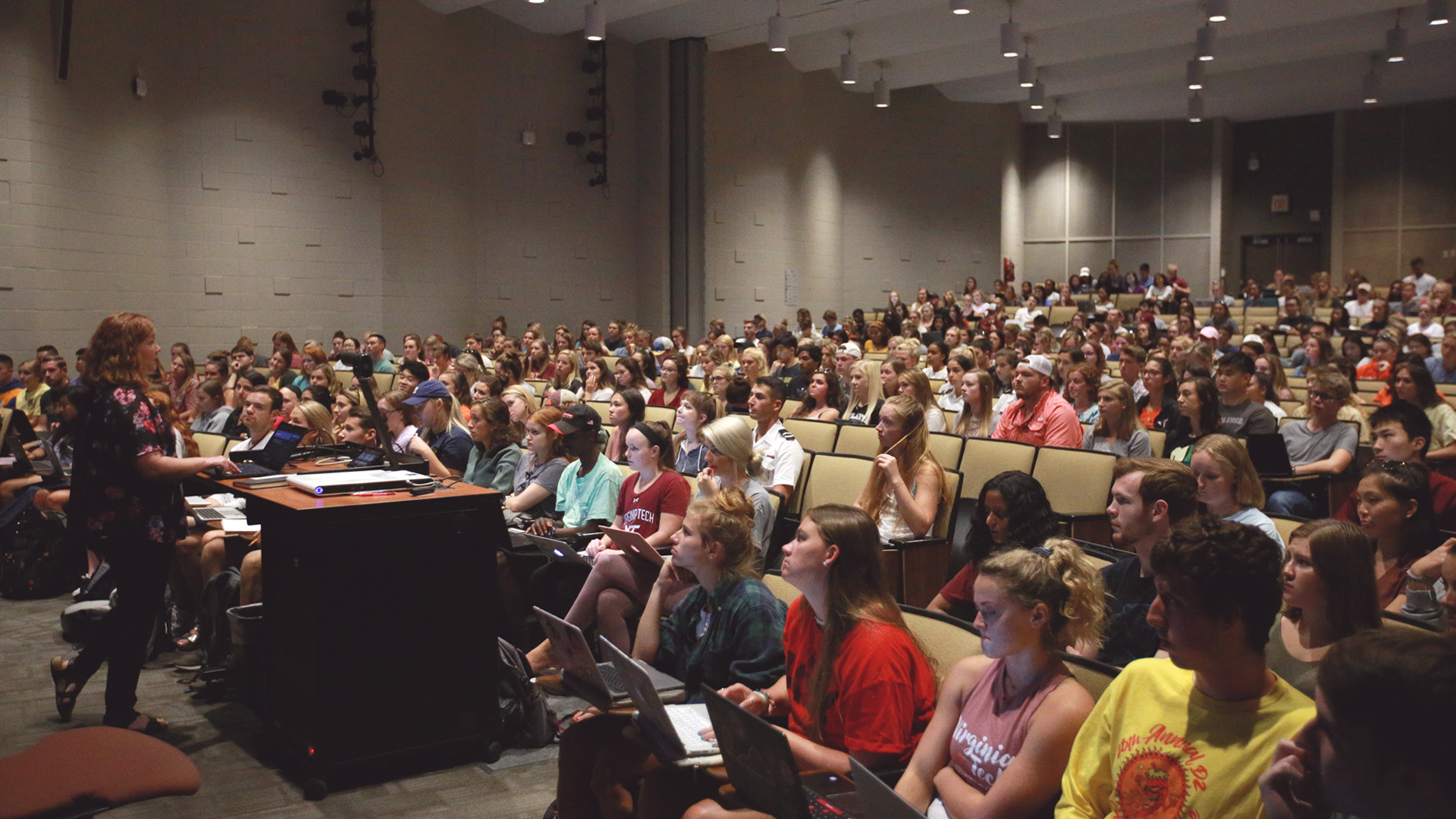Anatomy and Physiology 2135 is beginning to fill up quicker than most courses offered during the summer at Virginia Tech.
If you snooze, you lose! This timeless saying accurately describes how fast the high-demand courses fill up during summer session at Virginia Tech. Students can register for classes up until the first day of classes; however; they will lose out if they do not register for the popluar courses early.
One of the high-demand courses, by Virginia Tech students as well as visiting students, is human anatomy and physiology, offered online and taught by Terri Gillian, an instructor in the Department of Biomedical Sciences and Pathobiology in the Virginia-Maryland College of Veterinarian Medicine. During the fall and spring sememsters, this course boasts over 400+ students on average, and has seen more than 80 students register for the online version offered this past summer.
First introduced in the 2012 summer session, students have had an opportunity to complete the A&P sequence (eight credit hours) over the two six-week summer sessions. Gillian’s course has attracted interest from all over the United States and beyond, including a student in Israel as well as another student on military deployment in Afghanistan.
A new addition to the course for the 2019 summer session is that Gillian will co-teach the course with Dr. Fawzy Elnady, a visiting professor from Cairo University where he serves as a faculty member in anatomy and embryology.
"Many post-graduates take this course as a requirement for a healthcare professional program (physical therapy, occupational therapy, pharmacy, dentistry, physician assistant)", notes Gillian. Other students hoping to gain entrance to medical school take the course to improve their scores on the entrance exam (MCAT). The majority of the students taking the course are undergraduates majoring in:
- Human Nutrition Foods and Exercise (50%)
- Biological Sciences (18%)
- Neuroscience (7%)
- Human Development (7%)
- Other (18%): Biochemistry, Psychology, Food Science Technology, Animal and Poultry Sciences, Microbiology, Chemistry
Professor Terry Gillian meeting with Dr. Fawzy Elnady as they plan to co-teach the anatomy and physiology course.
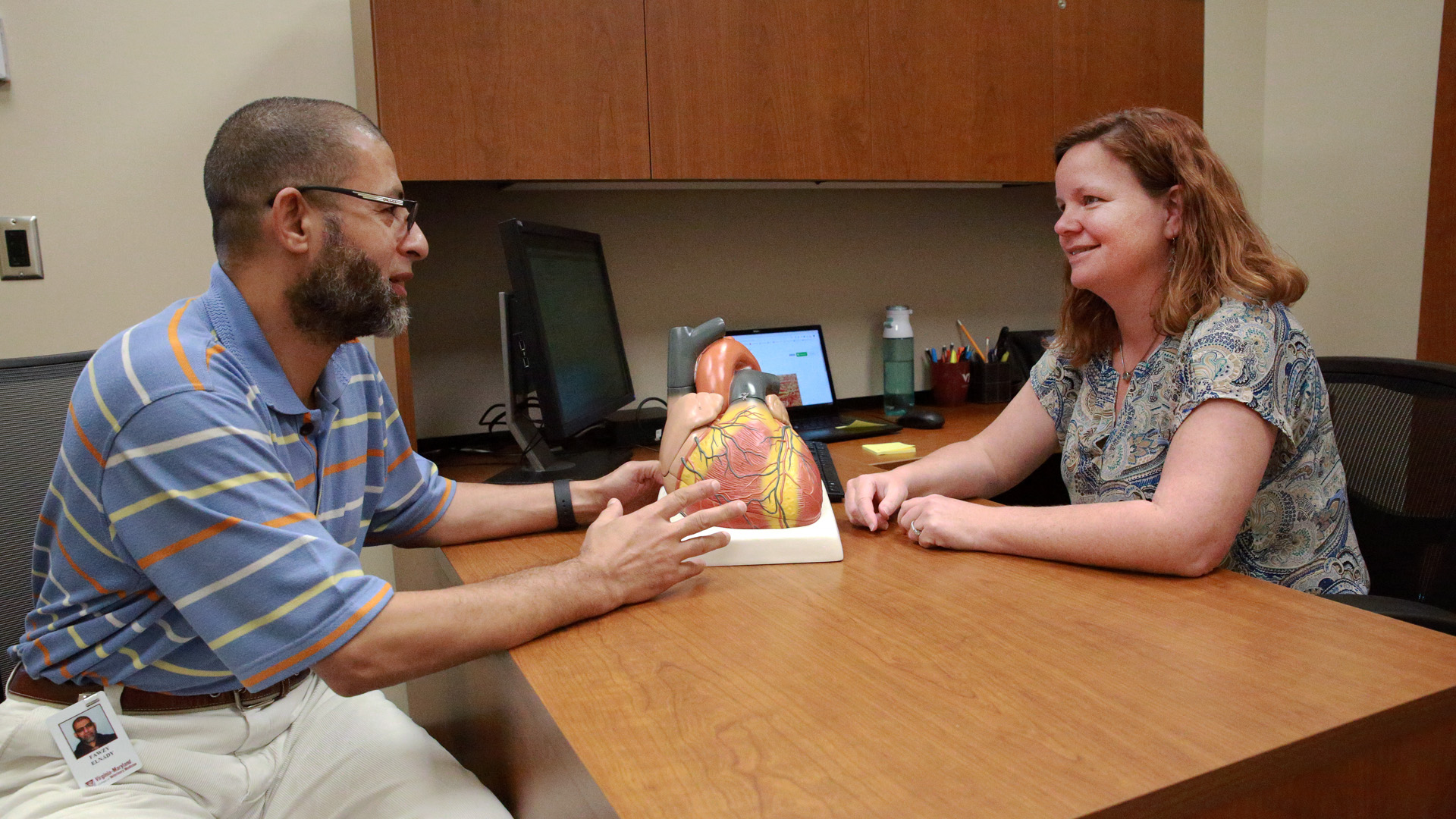
Gillian admits that she was worried the first summer that the course was offered as she did not know if students could keep up with the demands of this rigorous course. “The course is especially challenging because it requires learning a great deal of new terminology as well as the application of the terminology to understand complex physiology,” shares Gillian. “I emailed all students in advance of the class of the challenges that they faced. I was pleasantly surprised at how well the students rose to the challenge.”
The grades in the summer are typically slightly higher than during the fall and spring semesters, observes Gillian. “According to my students, this is because this class becomes their sole focus.
Professor Terry Gillian introducing students to the Teacher Assistants assigned to the course. Due to the large class, there are 7 TA's who roam and answer questions students may have during the class.
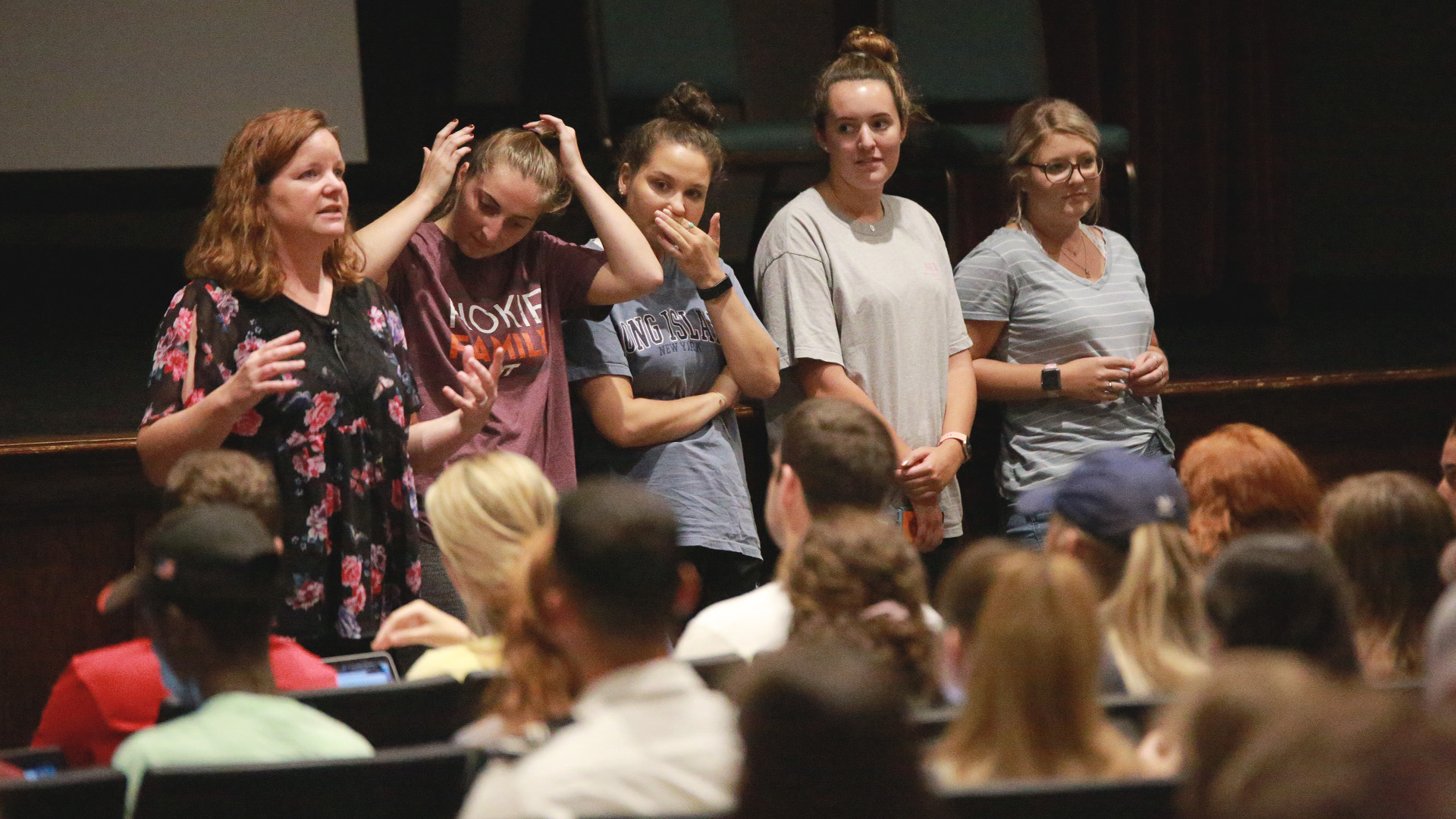
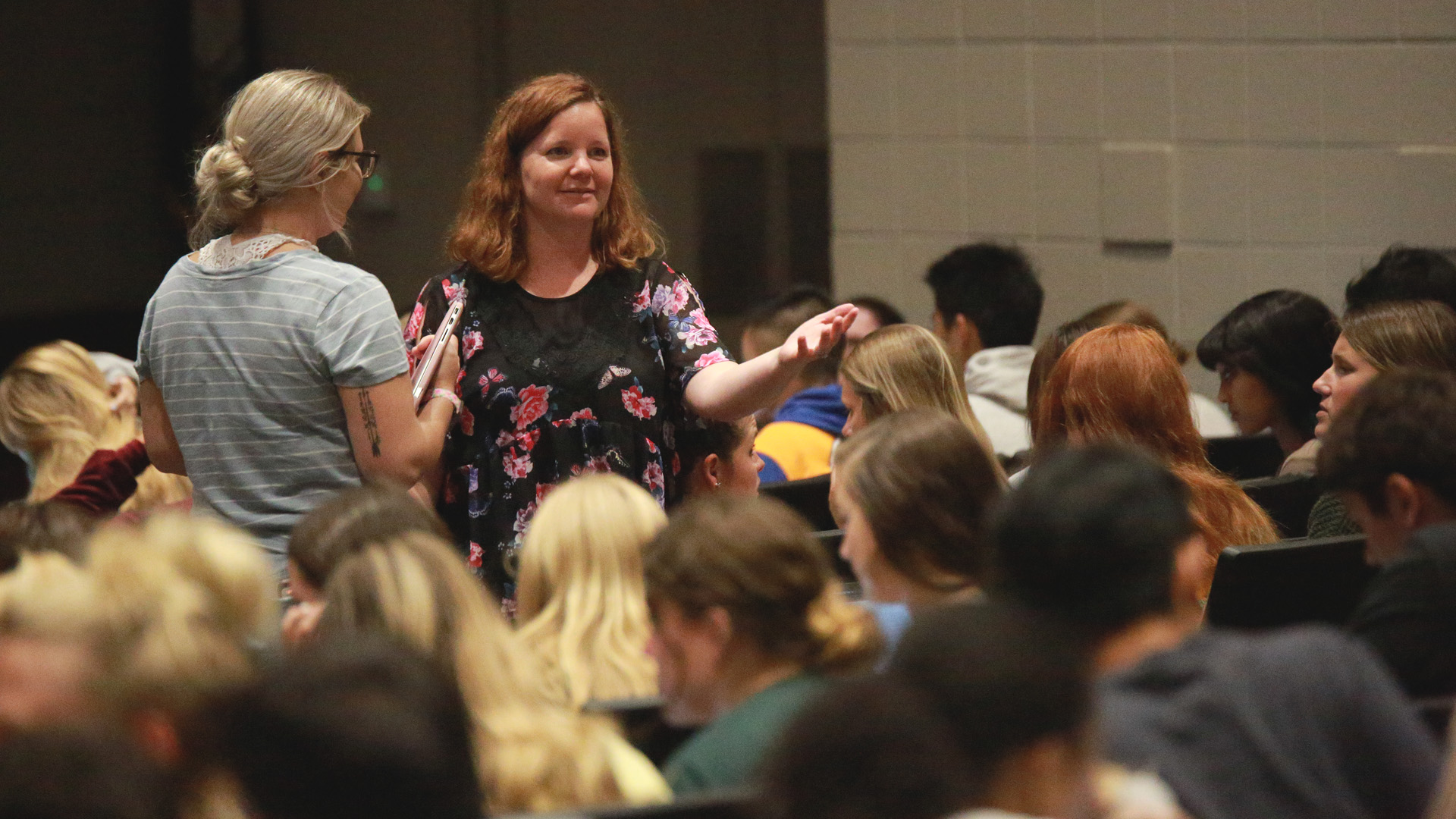
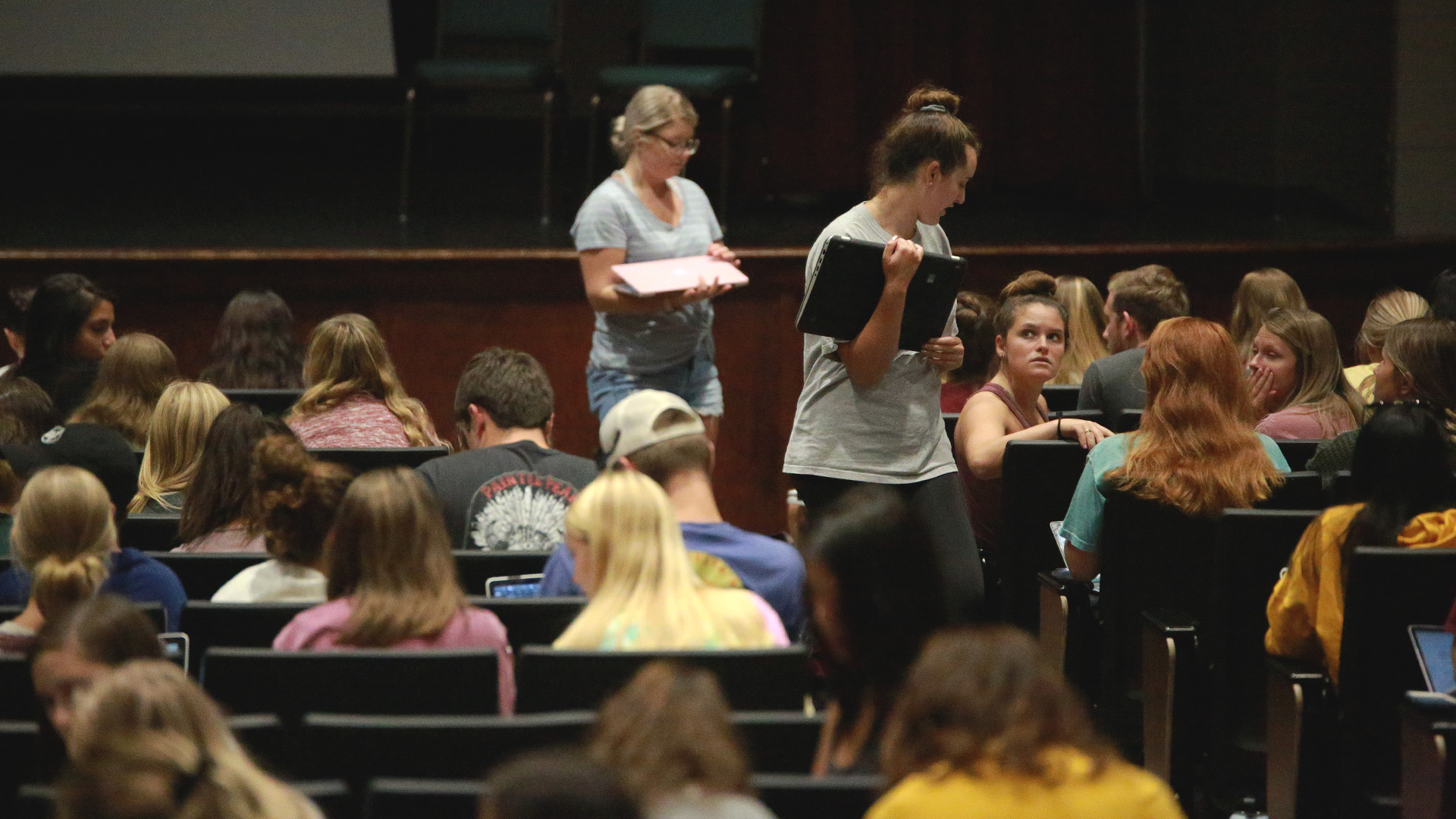
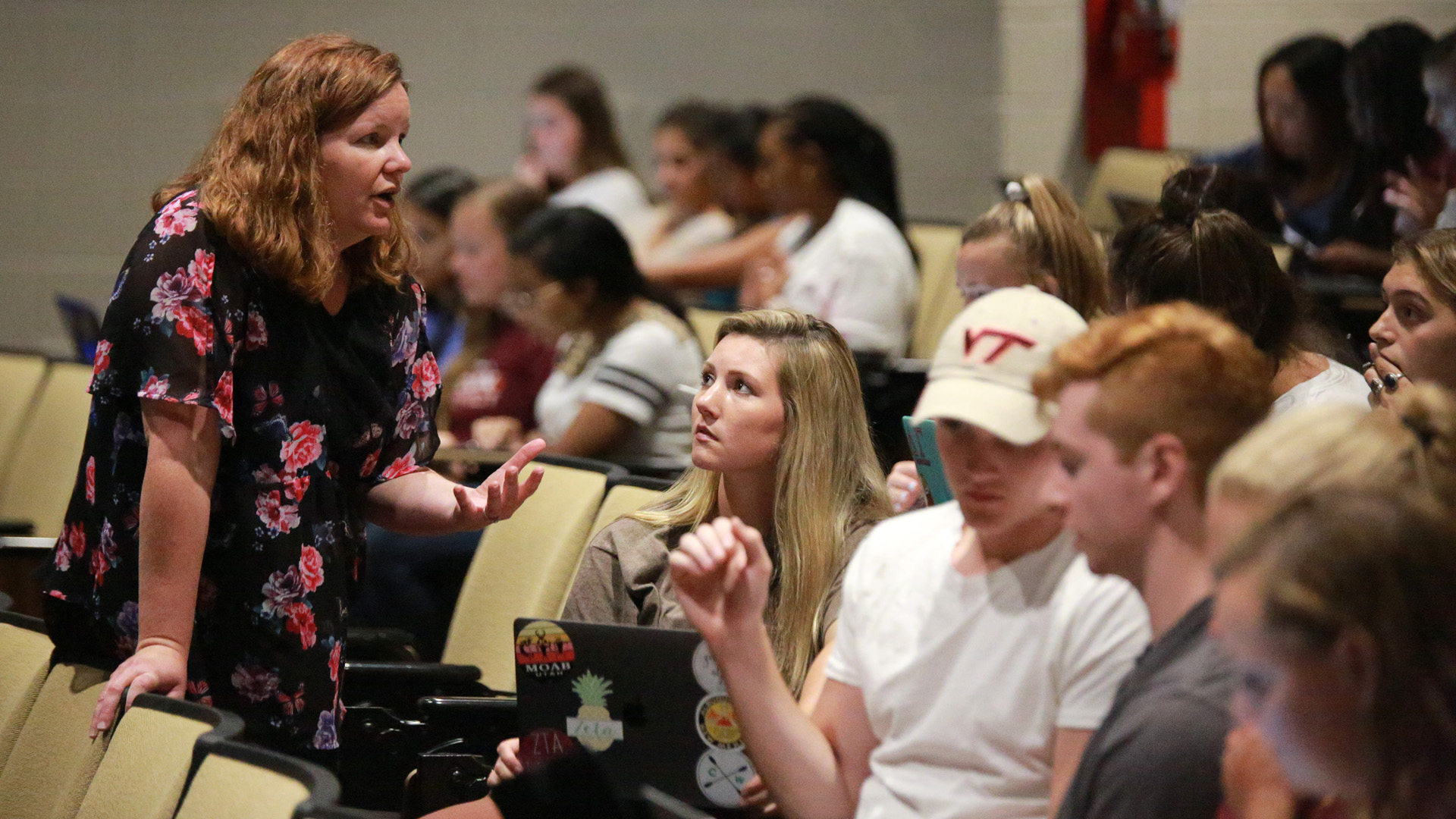
“This is often the only class that they are taking and they work to minimize their other commitments. Students are capable of learning at a rapid pace when immersed in the subject. The success of my students is the best part about teaching in the summer.”
Gillian is excited about new emerging technology to enhance the classroom experience. “I see virtual reality and augmented reality playing a major role in the future of anatomy education. Students will be able to perform virtual dissections anywhere. Although the cost is a big hurdle to overcome with goggles costing more than $3,000, I am hoping that an economy of scale brings this within reach in the future.”
